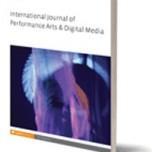The Philosophy and Psychology of the Scenographic House in Multimedia Theatre.
The full-scale house has a long history in theatrical set design, and the addition of video projections and digital effects in recent multimedia theatre has resulted in some extraordinary productions that compress or reconfigure ideas of time, space and place, and interrogate the close interrelationships between the macro and micro, and the real and the unreal. Digitally enhanced house sets and façades in works by Heiner Goebbels, Keith Armstrong, the Builders Association, Uninvited Guests and La Fura Dels Baus/ENO are analysed in relation both to their psychological effects on audiences and to philosophical readings, from Gaston Bachelard's notions of childhood memory and ‘intimate immensity’ to Sigmund Freud's theories of the uncanny [unheimlich]. Heiner Goebbel's Eraritjaritjaka (2004) provides a central case study, where the initial familiarity and beauty of the white house façade draws the audience in with a wondrous, childlike anticipation that gives way to a vertiginous sense of haunting and the uncanny as a series of live and recorded projections seemingly stretch time, space and media, and theatrically conjoin notions of the conscious and the unconscious, the inside and the outside, the real and the unreal.
Citation:
Dixon, Steve. "The Philosophy and Psychology of the Scenographic House in Multimedia Theatre." International Journal of Performance Arts and Digital Media, vol. 6, no. 1, 2010, pp. 7-24, doi:10.1386/padm.6.1.7_1.

